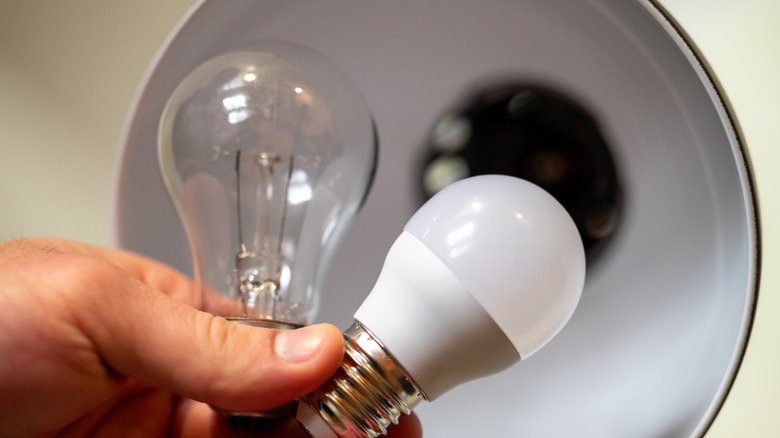Think Twice Before Tossing These Common Glass Items Into Your Recycling Bin
Recycling as much waste as possible is a no-brainer when it comes to making your home more eco-friendly. Glass is a material that can be melted down and reused for years and years. With this in mind, it seems logical that all glass should be able to flow into the reuse stream. Yet, that's not the case with lots of unwanted household glass. Only about 40% of the glass that goes to the recycling center is acceptable for reuse. Among these rejected items are light bulbs, Pyrex containers, glass bakeware, window glass, mirrors, frosted glass, drinkware, and broken glass containers.
Unfortunately, throwing this stuff into your curbside bin can cause major upsets to the recycling process. These items either contaminate the load or cause potential harm to workers. They all potentially reduce a recycling facility's efficiency, costing the center more money. Throwing these things in with wine bottles and jelly jars can even lead to an entire batch being thrown out.
All is not lost if you can't bring yourself to throw these things in the trash. If your unwanted stuff is still usable, donate it before considering recycling. However, even for broken glass, there are some alternative routes to keep it from becoming landfill fodder.
Why isn't this type of glass recyclable?
Broken glass is a recycling conundrum. Lots of containers shatter in the bins or during the sorting process. The danger of broken glass for humans isn't a surprise, but the shards are also nearly impossible to separate from other recyclables. This can lead to a whole batch going to the landfill. The same problem has led some curbside programs to no longer accept glass at all.
Certain types of glass are unrecyclable because of their ingredients. The chemical differences among these products make the glass melt at different temperatures compared to glass food containers. Mirrors, windows, and lightbulbs all contain additives or coatings that put them in this category. If a dish has been treated for heat-resistance, like Pyrex, this addition makes it trash-worthy, as well. Drinking glasses and glass plates are made from material that melts at a different temperature than container glass. Combining container glass with treated glass or glass that has a different melting point results in new glass that's brittle and unreliable.
What to do with glass that can't go in the bin
Before resorting to either recycling or throwing away non-recyclable glass, first consider repairing or reusing the object yourself. Of course, take precautions when handling broken glass. You can use super glue on broken glass. If the repair is beyond your confidence level, see if there's a Glass Doctor location near you in either the US or Canada. This company does its best to fix window glass before replacing it.
Rehousing glass that can't go curbside does require some searching. Most cities have bottling facilities; a phone call or email to your nearest one can let you know if they accept broken bottles. For broken window panes, Glass Doctor can help you recycle ones that are beyond repair. Some stores or your local hazardous material drop-off site are good options for light bulb recycling.
Your search for local glass reuse or recycling options might come up empty. In the case of broken glass, the shards are destined for the landfill. First, take a few steps to keep garbage collectors safe from cuts. Placing glass shards in a sealed box secured with labeling "broken glass" goes a long way in preventing harm to workers. There are also plenty of crafty and creative ways to repurpose broken glass in your home and garden. Among them are mosaics, sun catchers, or vase fillers for flower arrangements.


